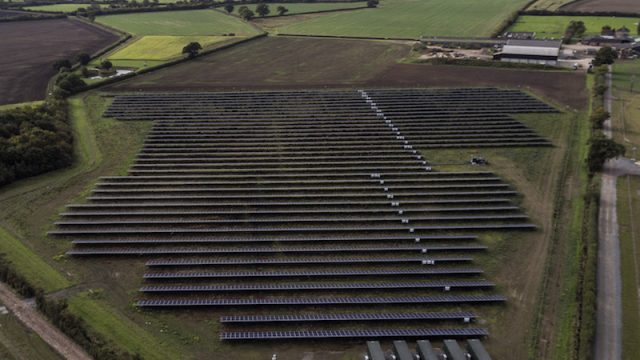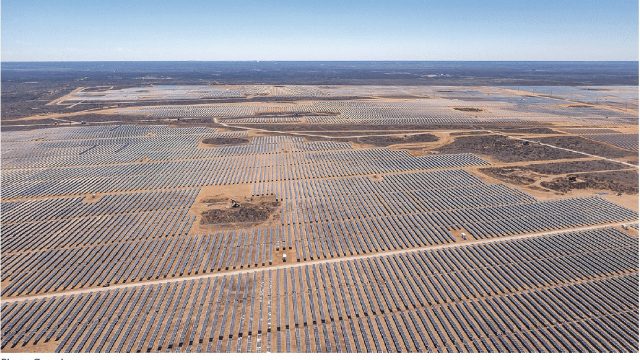Design wind speeds for Solar PV
Published 29 October 2021
In this follow-up article to his previous LinkedIn post on why we see step-change in design wind speeds at some national borders, Simon Hughes shares his thoughts and conclusions.
I posted recently with an open question: “Why do we see step-change in design wind speed at some national borders?” I was pleasantly surprised how many took time to view, react and comment – thank you! As a follow-up, here’s a short article to summarise some of the conversation.
For context, I’m interested in solar PV support structures here; they’re lightweight structures and their safety, cost and embodied kgCO2e are sensitive to extreme wind speed assumptions more than anything else. Solar PV is one of Everoze’s core areas of technical and commercial consultancy. Everoze exists to help our clients accelerate the transition to a decarbonised energy system. We’re a team of 75 consultants who are flexible, experienced and interdisciplinary. We have offices across Europe, and we’re active in energy markets across the world. We are a trusted advisor to owners, investors and lenders across the sector and work closely with our clients to make projects, companies and technologies futureproof and financeable. Between Everoze and Skyray, we offer a wide range of services related to specifying, procuring, reviewing, due diligence, inspection and problem-solving for solar PV support structures.
Site specific design wind speed analysis
Site wind assessments « typically result in significantly less wind load than using the code »
Everoze has often recommended site-specific wind studies. Soltec’s Bernd Zwingmann pointed out that site wind assessments « typically result in significantly less wind load than using the code » which comes with a cost benefit for PV plant design – we back you on that. In our view, it’s safe to do if there’s enough long term, good quality data from a nearby WMO weather station (e.g. major airport, national metrological office’s weather station) and the analysis must be robust.
Cautious voices maintain “just use the code wind speeds” because they’re known to be safe. Afterall – as Thorsten Kray mentions – national annexes handle the conversion between map speed (10-min mean) and gust pressure (<1s peak) with subtle differences, so comparison of map speeds can be problematic. Still, I believe there are cost and CO2e savings to be made for medium and large scale grid-connected PV projects which should be able to afford a robust site wind assessment.
We mustn’t create a market where suppliers compete on « Who will propose the lowest design wind speed? »
In a free market, we want competition to focus on factors like steel price, fabrication, delivery, constructability, and scale. It definitely makes sense to study and safely optimise design wind speeds, but we mustn’t create a market where suppliers compete on “who can propose the lowest design wind speed?” There are safeguards that can be applied here on a project basis (e.g. a ‘floor’ windspeed level compared to the national standard, peer review of site-specific studies) and in the longer term, perhaps the analysis could become more standardised.
In Europe, most of the structural design process is well harmonised using Eurocodes (EN1990 to 1999) but wind speeds are determined nationally. There’s a combination of political, legacy, technical and climatic reason for this. Bearing in mind that standards are used by wide-ranging stakeholders and often cross-referenced in other national regulations, Graham Knapp points out the inertia in the system. And Angel Galvan Caride notes that some countries have different wind maps for different design applications. Ideally we’d have consistently generated extreme wind maps with compatible wind speeds either side of borders, but that’s not coming any time soon! (At least not from CEN or national standard bodies)
Portugal and Spain
About Portugal and Spain in particular, there does seem to be an upwards bias in map wind speed compared to other Atlantic-facing European states (FR, UK, IRE). Perhaps this is partially or locally justified by different regional wind climates (such as Tramontana, Simon Ferguson, or mountain climates, Matt Crossman), but not 100%. How much of the difference originates from historic or political factors? It’s hard to say. I’m wise enough not to speculate here, particularly as thunderstorm events – rather than more predictable synoptic winds – give reason for caution in PT and ES.
It’s been said a few times: a robust site-specific design speed assessment is likely to help for medium and large grid-connected solar PV projects in these markets.
Thanks for reading! What’s next?
I hope some of you found this useful, I’ve enjoyed your engagement! I wonder if there’s enough interest for some action:
- Funding to develop a joint-industry extreme wind map for PV structure design across European solar markets? (i.e. an improvement on the current Eurocode national annexes, but not as optimised as a site-specific assessment)
- A guideline setting minimum requirements for site wind speed assessment approach?
Footnotes…
- We should only begin optimising-down design wind speeds once we’re comfortable that the rest of the wind engineering design is done safely. By that I mean orography assessment, pressure coefficients, aeroelastic stability. At least cautious map wind speeds do offer some protection in case of errors in wind engineering design.
- I’m focusing here on differences between European markets. Some of the themes about site assessment are quite universally applicable in other global PV markets though. The wind engineering « 101 » thing you need to know is that a US (ASCE7) approach characterises wind in terms of a 300-year 3s gust speed, whereas a European approach characterises wind in terms of 50-year 10-minute mean. After safety factors and other adjustments, the end results for design aren’t as different as this would suggest.
- Any views on insurance implications of adopting a site-specific assessment would be welcomed.
- And then design for climate change… that’s for another day






